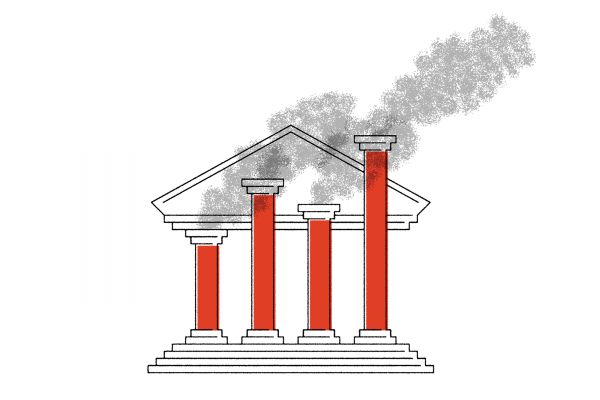WHAT'S THE MOST generic, uninteresting building in your town? Probably the new bank branch, all brown brick with sterile “landscaping” in the parking lot.
And what’s the most dangerous building in your town? Probably the new bank branch, with its drive-through window and its smiling teller and its pens on chains.
Dangerous because if it’s connected to one of the big national banks—Chase, Citi, Wells Fargo, Bank of America—that branch is deeply enmeshed in the destruction of God’s creation that climate change represents. It’s taking your money and turning it into carbon.
Those four banks—the same ones that helped nearly bring down the world economy in 2008—are the main lenders to the fossil fuel industry. If you want to build a new gas pipeline, if you wish to frack a well, if you hope for a shiny new LNG port, all you have to do is apply and chances are you’ll get your cash. Consider Chase, which lends more than any bank on Earth to the fossil fuel industry. In the last three years it handed the industry $196 billion. For ultra-deep-sea drilling, for Arctic exploration—you name it. It’s single biggest energy client? TC Energy, which is still trying to punch the Keystone XL pipeline across the continent. Its lending has gone up—way, way up—since the Paris climate accords. If Exxon is a carbon giant, so is Chase.
Read the Full Article

